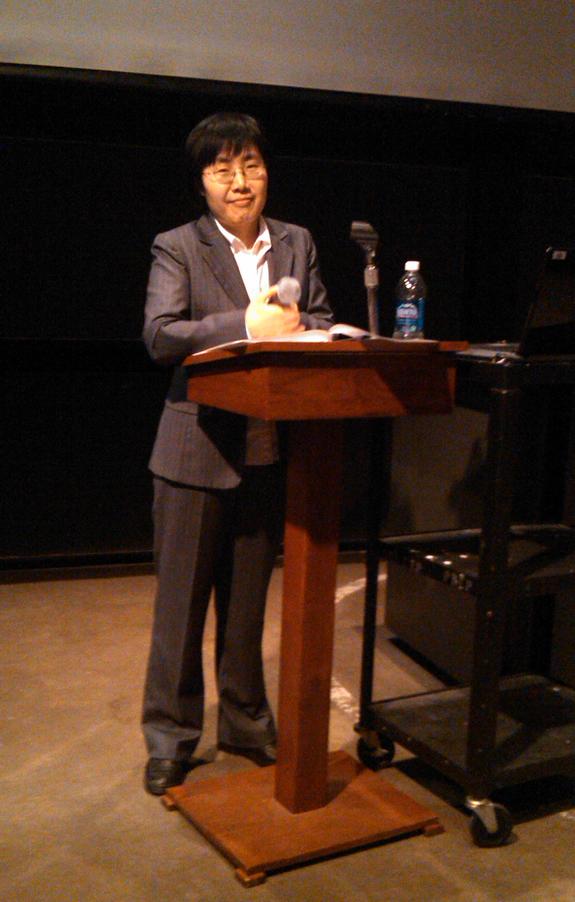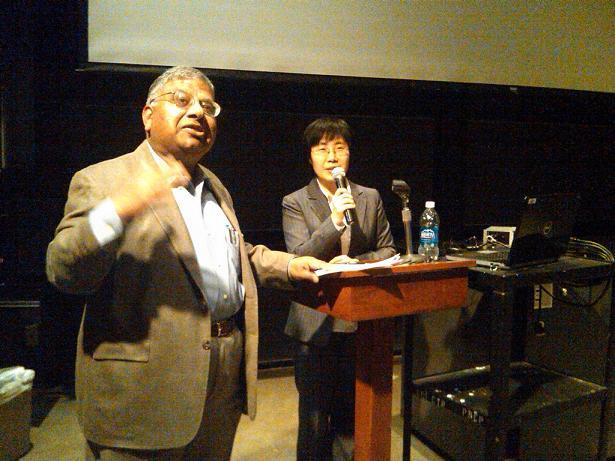Contribute
| Sankara The Teacher: Message And Style |
Bijoy Misra
02/27/2011
A lecture at Harvard University by Haesook Ra
January 9, 2011
“As a lump of salt dropped into water would dissolve with water, and no one is able to pick it up, but from wherever one takes it, it tastes salt, likewise, my dear, this great Being, infinite, endless, is but a mass of consciousness [vijnana-ghana]. Having come out from these elements, it vanishes into them. After death there is no consciousness. This is what I say, my dear. So said Yajnavalkya.†(Brhadaranyaka Upanisad 2.4.12)
By citing several examples to make her point and by putting forth a brilliant analysis of Sankara’s style of presentation, Haesook Ra made a forceful presentation of the genius of Sankara by which Sankara could transform the way the commentaries could be presented. The exposition and analysis was new and gave a refreshing view of the eminent philosopher on his style, teaching method and eloquence.
Having studied Buddhism in Korea and Japan, Haesook Ra, a Ph.D. candidate at Harvard, picked up famous 8th century Indian philosopher Sankara’s relatively unknown commentary on Brhadaranyaka Upanisad as her thesis text and studied it very well to get to know him as teacher. Through her studies, she discovered that Sankara’s commentary on the Brhadaranayaka Upanisad was not just a philosophical project, but a carefully designed piece of literature to establish and strategically teach his doctrine of nondualism.
From verse 2.4.12 cited above, Sankara would return to his definition in verse 4.3.7 with the statement “Which one is the self? The self is this person, consisting of consciousness [vijnana-maya], in the middle of breaths, the light within the heart. It is similar and moves both worlds as if it thinks and as if it moves, for it, having become asleep, transcends this world, the forms of death.†Thus he would connect the Upanisad word vijnana to his philosophical concept caitanya (consciousness) and proceed on to the declaration of the unity of self with consciousness. The track of nondualism is further established through the Upanisadic declaration of “neti netiâ€, suggesting the indescribability of the undivided Brahman that pervades the universe.
It is not certain yet whether Sankara possibly used similar techniques in his other commentaries and this awaits for further study as ensued in the Q&A session. The timeline of his writings are not established yet and hence it’s difficult to evaluate the evolution of his thinking. What can possibly be surmised is that he lectured on the topics in class settings and his lectures were recorded by the students in manuscript form. Other questions related to Sankara’s life and legends connected to his life. Shanta Prakash from Rhode Island narrated popular stories on Sankara commonly used in the State of Kerala in India, where Sankara originated.
The next event in this series will be on ‘Gods Take Form: Indian Art at the Turn of the Millennium,’ by Laura Weinstein, the Ananda Coomaraswamy Curator of South Asian and Islamic Art, Museum of Fine Arts, Boston, on 13 March at 3 PM, in Hall A, Harvard University Science Center, 1 Oxford Street, Cambridge. You may contact C Gopinath at cgopinat@suffolk.edu, or Chandrakant Shah at chandu420@gmail.com or Bijoy Misra at bmisra@fas.harvard.edu for any questions or to be in the mailing list. Lectures are free and everyone is invited.
You may also access this article through our web-site http://www.lokvani.com/

